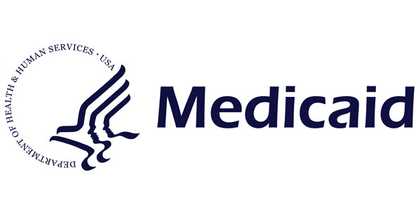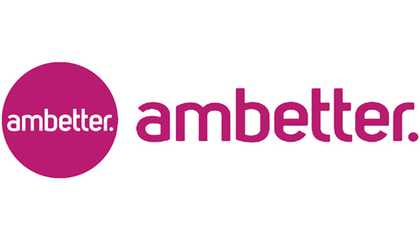Treatment options for misalignments and malocclusions, more commonly referred to as crooked teeth and bad bites, have made huge strides in recent years. Modern solutions manage to be discreet and convenient whilst still offering some serious results. Given this, it’s no wonder that people are asking whether orthodontic treatments such as braces are covered by Medicaid.










Call us for a free consultation!
You've got a lot to smile about.
What Is Medicaid and Does Medicaid Cover Braces?
Medicaid is a program that aims to ensure that those with limited income and resources are able to access the medical care and support that they need. General rules relating to Medicaid are set by the federal government but it’s up to each state to manage its own Medicaid program.
This means that there’s no simple answer to the question of “Do orthodontists take Medicaid?” Rather the treatments covered by Medicaid, including braces and other orthodontic interventions, can vary from one state to the next. In many states, your age will also be a major determinant of whether you’re able to use Medicaid for braces and similar treatments.
Orthodontic Treatment For Children
Federal rules for Medicaid programs dictate that orthodontic treatment for children must be covered if it is medically necessary. This guarantees that the most serious issues and those most likely to lead to additional problems in the long term are covered, but does leave significant room for variation between states.
This variation is primarily due to differing interpretations of what is considered medically necessary and whether the state classifies those aged between 18 and 20 as children or adults for the purpose of Medicaid.
With this said, orthodontic treatments such as braces are usually still very accessible for children covered by Medicaid, and most children needing treatment will receive it without issue. This means that if you’re a parent needing to ask “Does Medicaid cover braces?”, the answer will likely be yes
Orthodontic Treatment For Adults
The situation for those aged over 18, or over 21 in some states, is very different. Unlike children’s orthodontic treatment, states do not have any obligation to cover adult orthodontic treatment as part of their Medicaid program. Some states do still cover treatment for adults when it’s considered medically necessary but, unfortunately, the majority do not. There are in fact no minimum requirements for Medicaid schemes when it comes to dental care, with some states not even covering emergency dental treatment.
What Counts As Medically Necessary Treatment
The task of defining what orthodontic interventions are considered medically necessary is left to the individual states, making the question of what treatment is covered by Medicaid an even more complex one. The American Association of Orthodontists, who have sought to bring clarity and increased equity between states, have also provided their own definition and a list of automatically qualifying criteria.
This definition describes medically necessary treatment as that which addresses a malocclusion or malocclusions that “cause pain or suffering, physical deformity, significant malfunction, aggravates a condition, or results in further injury or infirmity.” Although state Medicaid schemes are under no obligation to follow this definition or the associated qualifiers, they do provide some clarity as to which conditions may be seen as requiring “medically necessary” treatment, which can be helpful for those wondering “When does Medicaid cover braces?” They also go a long way to ensuring that those who rely on Medicaid can get orthodontic treatment when they have a genuine need for it.
Cosmetic Orthodontic Treatments and Medicaid
Orthodontic treatment provided solely for cosmetic reasons does not fall under the definition of medically necessary and, as such, these treatments will not be covered by Medicaid. However, since it’s common for orthodontic treatments to have both medical and cosmetic benefits, Medicaid can often help with the cost of orthodontic treatments that improve the appearance of the teeth. In these instances, cosmetic improvements are essentially considered to be an incidental benefit, meaning that it won’t impact whether your treatment can be covered by Medicaid.
Getting Your Orthodontic Treatment Covered By Medicaid
The first step towards getting Medicaid-funded braces, aligners, or other treatments is to make an appointment for you or your child with a fully qualified and licensed dentist or orthodontist who accepts Medicaid. They’ll carry out a full orthodontic evaluation, determining whether treatment is necessary and which options will be effective for you.
As part of this evaluation, they’ll consider how likely it is that you’ll be able to use Medicaid to cover the treatment costs. If they determine that the treatment counts as medically necessary and is likely to be covered, they will then submit the necessary documents and records for Medicaid approval. Your state’s Medicaid scheme will then review this and provide both you and your provider with confirmation as to whether your treatment is covered, allowing you to move forward with confidence.
Will Medicaid Cover All of My Treatment?
Even if you’re eligible for braces covered by Medicaid, you may still face some out-of-pocket expenses. These expenses can include enrollment fees, copayments, premiums, and deductibles, with the total cost to you depending on how much your orthodontist charges and what your state’s Medicaid program will cover.
Invisalign Clear Plastic Aligners, Lingual Braces, and Medicaid
Even if you are able to get braces covered by Medicaid, alternative orthodontic options such as Invisalign’s clear plastic aligners or lingual braces may not be covered.
Although patients may be more comfortable with these options, they are usually more costly than traditional braces and may not be suitable or as effective in treating complex or severe malocclusions and misalignments. Because of this, some state Medicaid schemes will not consider them to be a medically necessary treatment and so won’t cover them.
This isn’t always the case, however, and will depend on your state and potentially even your chosen orthodontist.
Potential Issues and How To Deal With Them
In some instances, you may be entitled to have your orthodontic treatment covered by Medicaid but aren’t able to access it through your current dental clinic. They may disagree with you as to whether the treatment would be medically necessary or they may simply not accept Medicaid. In either case, speaking to another clinic that does accept Medicaid is the best next step.
Unfortunately, if you’re unable to access treatment through Medicaid due to your state not covering treatment for adults even when it is medically necessary, speaking to a different dentist or orthodontist won’t help. In this case, you’ll need to look into other options.
Alternative Options
If you do end up needing treatment that isn’t covered by Medicaid, it doesn’t have to mean that treatment isn’t accessible for you. There are multiple other options that could allow you to address any orthodontic issues you may have and achieve the smile of your dreams without a large upfront payment.
The most straightforward way to do this is to pay for your braces over a period of time using a payment plan. Many dental and orthodontic clinics offer payment plans that can make treatment a lot more affordable and accessible than it would be if you needed to pay upfront. The timeframe and amount of each payment can vary, but a good clinic will work with you to help you understand your options. Alternatively, you can also use regular credit finance to spread the payment over time.
In these cases, you may want to consider whether basic options will be a more reasonable choice than something like lingual braces, which ultimately deliver the same results but at a much higher premium. Using a dental school’s clinic can also help to reduce costs, sometimes drastically, but does limit your options.
It may also be worth considering whether to take a dental or orthodontic insurance plan. These plans run alongside other medical cover such as Medicaid and specifically cover dental and orthodontic treatment. Premiums and coverage can vary significantly, but in some cases can be one of the more affordable ways to access the treatment you need.
Taking Your Next Step
If you live in Arkansas or Missouri and you’re ready to take the first step towards resolving your orthodontic issues, contact Westrock Orthodontics today. Our professional and experienced orthodontists can help you understand your options and take Medicaid for all the same services you’d get with private insurance, ensuring that you get the treatment you deserve without any excessive out-of-pocket payments.









